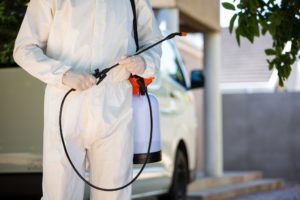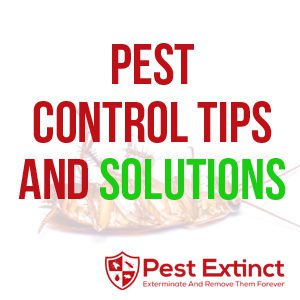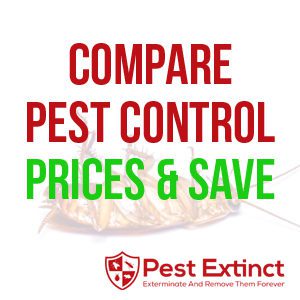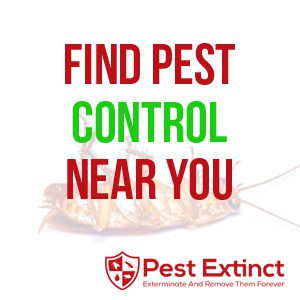
Unwelcome Guests: The Four Major Pests to Watch Out For
When it comes to pests, some are mere nuisances, while others can pose serious risks to our health and property. Out of the myriad of pests out there, four stand out as the most notorious, often requiring prompt action and professional intervention. Let’s delve into these major pests, understanding their behavior, risks, and effective countermeasures.
1. Termites
Nature’s Tiny Demolishers
Termites, often referred to as “silent destroyers,” are notorious for their wood-eating habits. These small, ant-like pests can compromise the structural stability of homes, causing billions in damage annually.
Risks and Damages:
- Structural Damage: Termites can weaken wooden structures, leading to costly repairs.
- Loss of Property Value: Termite infestations can significantly devalue properties.
- Rapid Reproduction: Left unchecked, a termite colony can grow exponentially.
Countermeasures:
- Regular Inspections: Periodic professional inspections can catch early infestations.
- Barrier Treatments: Applying treatments can deter termites from approaching structures.
- Prompt Treatment: At the first sign of infestation, call pest control professionals.
2. Rodents (Rats and Mice)
Small Size, Big Problems
While often seen in urban legends and horror stories, the threat of rats and mice is very real. These pests can spread diseases, damage property, and contaminate food.
Risks and Damages:
- Disease Transmission: Rodents can transmit diseases like Hantavirus and Salmonella.
- Property Damage: They can gnaw through wires, wood, and even some metals.
- Contamination: Rodents can infest food stores, rendering them unsafe.
Countermeasures:
- Sanitation: Keeping areas clean can deter rodents.
- Sealing Entry Points: Blocking gaps and holes can prevent entry.
- Traps and Baits: These can be effective, but it’s often best to consult professionals.





3. Cockroaches
Survivors of the Insect World
Cockroaches are hardy pests known to survive in a variety of environments. They are carriers of numerous diseases and can be particularly troublesome in homes and businesses.
Risks and Damages:
- Disease Spread: Roaches can transmit pathogens like E. coli and Salmonella.
- Allergens: Their droppings can exacerbate allergies and asthma.
- Rapid Reproduction: Cockroaches breed quickly, making infestations hard to control.
Countermeasures:
- Cleanliness: Regular cleaning can make environments less attractive to roaches.
- Seal Cracks: Prevent entry by sealing gaps in walls, floors, and around pipes.
- Professional Pesticides: Over-the-counter solutions may not be as effective as professional treatments.
4. Bedbugs
Nightmarish Bloodsuckers
Bedbugs have made a dramatic comeback in recent years. These tiny pests feed on human blood and can be a nightmare to eradicate.
Risks and Damages:
- Bites and Irritations: While not disease carriers, their bites can cause itchiness and discomfort.
- Emotional Stress: Infestations can cause significant psychological distress.
- Spreading: Bedbugs can easily spread to different areas through luggage, clothes, and furniture.
Countermeasures:
- Heat Treatment: Bedbugs are sensitive to heat, making this an effective treatment.
- Regular Inspections: Especially important for frequent travelers.
- Professional Extermination: DIY methods are often less effective against these resilient pests.
While pests have been a part of our world for millennia, modern science and strategies offer us robust solutions to deal with them. The key is awareness, early detection, and swift action. Whether it’s the structural threat of termites or the nocturnal terror of bedbugs, knowing your enemy is half the battle won. Ensure you consult professionals when dealing with these major pests to guarantee a safe, effective, and comprehensive solution.




Treating the Four Main Pest Infestations: Effective Solutions and Best Practices
Effectively treating a pest infestation often requires a combination of preventative measures, direct interventions, and follow-up strategies. Here, we’ll delve into the treatment methods for the four major pests, ensuring that once they’re gone, they stay gone.
1. Termites
Initial Assessment:
First, determine the extent of the infestation. This usually requires a professional assessment which includes checking for mud tubes, wings shed by swarmers, or direct damage to wooden structures.
Treatment Options:
- Liquid Soil-Applied Pesticides: These are applied around the perimeter of a property, creating a barrier against termites.
- Bait Stations: These are strategically placed around properties to attract termites. They consume the bait, carrying it back to the colony, which in turn poisons the rest.
- Tenting and Fumigation: For severe infestations, this method can be effective. However, it requires families to vacate their homes temporarily.
2. Rodents (Rats and Mice)
Initial Assessment:
Look for signs of rodents—droppings, bite marks on food or objects, or nests made of shredded paper or fabric.
Treatment Options:
- Snap Traps: Effective for small-scale infestations and provide a humane solution.
- Live-Catch Traps: Allows for capture and relocation.
- Rodenticides: These are baits that kill rodents, but should be used with caution, especially in households with pets or children.
3. Cockroaches
Initial Assessment:
Look for signs like droppings, egg casings, and the roaches themselves, especially in dark and moist areas.
Treatment Options:
- Gel Baits: These are attractive to roaches, who consume them and die. Other roaches then eat the poisoned roach, spreading the effect.
- Insect Growth Regulators: These prevent roaches from reaching maturity, interrupting their reproductive cycle.
- Professional Spraying: Particularly effective for large infestations.




4. Bedbugs
Initial Assessment:
Look for tiny, rust-colored bugs, especially around bed frames, mattresses, and other furniture. Another sign is small bloodstains on sheets.
Treatment Options:
- Heat Treatment: This involves raising room temperatures to levels that are lethal for bedbugs but safe for most household items.
- Insecticides: Several classes, including pyrethrins, pyrethroids, and insect growth regulators, are effective against bedbugs.
- Mattress Encasements: These trap bedbugs inside, preventing them from feeding and causing them to eventually die.
Post-Treatment Best Practices:
Regardless of which pest you’re dealing with, post-treatment follow-up is crucial to ensure the infestation doesn’t return.
- Routine Inspections: Even after treatment, schedule regular professional inspections to catch any resurgence early.
- Sanitation and Cleanliness: Keeping areas clean, especially food storage and preparation zones, is crucial to deter pests.
- Structural Repairs: Seal up any cracks, gaps, or holes that might allow pests entry into your home or office.
- Stay Informed: Pests can develop resistance to treatments. Stay updated with the latest in pest control to ensure you’re always using the most effective methods.
Each pest presents its own unique challenges, but with a comprehensive approach that combines prevention, treatment, and post-treatment practices, you can ensure a pest-free environment. Always remember, professional guidance is invaluable in these situations, ensuring the health and safety of all inhabitants while effectively dealing with these unwelcome guests.





The Three Main Types of Pest Control: A Comprehensive Guide
In the world of pest control, different methods are employed to ensure the effective elimination of pests while also prioritizing the safety and well-being of humans and the environment. Broadly speaking, pest control can be categorized into three main types: biological, chemical, and physical/mechanical. Let’s dive deeper into each of these methods to understand their characteristics, advantages, and potential drawbacks.
1. Biological Pest Control
Definition: Biological pest control involves the use of living organisms to control or manage the pest population. This method often relies on introducing natural predators, pathogens, or parasites to reduce the number of pests.
Advantages:
- Eco-Friendly: This method doesn’t introduce artificial chemicals into the environment, reducing the chances of pollution.
- Targeted: Biological control agents are typically specific to certain pests, ensuring that non-target organisms are unaffected.
Drawbacks:
- Time-Consuming: It may take longer to see results as the natural predators establish themselves.
- Complexity: The introduced species may sometimes become invasive if not properly managed.
Examples: Introducing ladybugs to control aphids in gardens or releasing certain types of bacteria that are harmful to mosquito larvae in water bodies.
2. Chemical Pest Control
Definition: Chemical pest control utilizes formulated pesticides to manage and eliminate pests. These pesticides can be natural (like neem oil) or synthetic.
Advantages:
- Quick Results: Chemical methods typically offer rapid relief from infestations.
- Versatility: There’s a wide range of chemical products available to target various pests.
Drawbacks:
- Environmental Concerns: Overreliance or misuse of chemical pesticides can lead to soil, water, and air pollution.
- Health Concerns: If not used as per guidelines, some pesticides might pose health risks to humans and pets.
Examples: Insecticide sprays for cockroaches, herbicides for unwanted vegetation, or fumigation for termite control.
3. Physical/Mechanical Pest Control
Definition: This approach involves using physical barriers or actions to prevent, trap, or eliminate pests.
Advantages:
- Non-Toxic: Physical methods don’t rely on chemicals, making them safe for the environment and inhabitants.
- Direct: These methods often tackle pests head-on, either by capturing or excluding them.
Drawbacks:
- Labor-Intensive: Some physical methods require manual intervention, such as setting up and checking traps.
- Localized Effect: These methods typically work in a specific area where they are set up.
Examples: Using mouse traps for rodents, fly screens for flying insects, or using row covers in gardens to protect plants from certain pests.




Making the Right Choice: Factors to Consider
The type of pest control to be employed often depends on several factors:
- Nature and Size of Infestation: A large-scale termite infestation might require chemical intervention, while a few ants can often be managed with physical methods.
- Environment: In sensitive environments, like organic farms or near water bodies, biological or physical methods might be preferred.
- Safety Concerns: In areas with children, pets, or vulnerable individuals, it’s crucial to consider the health implications of any pest control method.
- Budget and Timeframe: Some methods might be more cost-intensive or take longer to show results.
Ultimately, a combination of these methods often provides the best results. By understanding the unique requirements of the situation and seeking expert advice, one can ensure a pest-free environment that’s safe and sustainable.
Top Pest Prevention Tips
Pests are more than just a nuisance; they can compromise the hygiene and safety of your environment. As the old adage goes, “prevention is better than cure.” Adopting preventive measures can save you from potential health risks and the costs of extensive treatments. Here’s a comprehensive guide to fortify your home or office against unwanted critters.
Keep Your Environment Clean
Maintaining a regular cleaning routine for both homes and offices is essential. Ensuring food is stored in sealed containers helps deter pests.
Eliminate Standing Water
Avoiding stagnant water in pots or containers is crucial. Additionally, make a habit of cleaning gutters and drains regularly to prevent water accumulation.
Seal Gaps and Cracks
It’s essential to check walls and floors for any potential entry points and patch them up. Installing screens on doors and windows also keeps pests at bay.
Proper Waste Management
Securing your trash in sealed bags can help deter pests. Cleaning and disinfecting bins regularly ensures no food scraps are left for pests.
Regular Inspection
Be proactive in checking for signs of infestations in your home or office. Consider hiring professionals for periodic inspections to identify and manage potential threats early.
Reduce Clutter
By organizing storage areas and discarding items that are no longer in use, you can reduce potential hiding spots for pests.
Maintain Garden and Yard
Pests are often attracted to overgrown vegetation. Keep your garden and yard maintained, and make sure to clean up fallen fruits and debris.




Store Firewood Away from Home
Storing firewood at a distance, ideally at least 20 feet away from your home, and elevating it off the ground can prevent pests from migrating to your living spaces.
Use Natural Repellents
Incorporating plants like mint or basil into your garden can repel pests. Similarly, essential oils like citronella or eucalyptus serve as natural deterrents.
Educate and Stay Informed
Knowledge is a powerful tool against pests. Make an effort to learn about the common pests in your area and stay updated on local pest outbreaks.
The Importance of Maintenance Visits from Pest Control Services
A successful battle against pests is not just about taking action when you spot a problem. It’s about ongoing vigilance and maintenance to ensure they don’t make a comeback. Here’s why regular visits from pest control professionals are vital:
Establishing a Barrier
The primary purpose of maintenance visits is to reinforce a protective barrier around your property. Over time, previously applied treatments may fade, providing gaps for pests to invade. Regular check-ins ensure that this barrier remains intact and robust.
Early Detection of Issues
Even with the best preventive measures, the possibility of a minor infestation or a new type of pest threat exists. Professionals can spot the early signs of trouble, long before an untrained eye might notice them. Early detection can mitigate damage and prevent minor problems from ballooning into major infestations.
Seasonal Concerns
Different pests become active or more prevalent during certain times of the year. Maintenance visits can adjust strategies according to the season, targeting species that are more likely to be a problem at that time.
Safeguarding Property Value
Undetected and untreated pest issues can harm the structural integrity of a property. By ensuring regular check-ups, you’re investing in the long-term value and safety of your property, preventing potential damages that can cost a fortune to repair.
Peace of Mind
Knowing that a professional is consistently checking and treating your property can provide significant peace of mind. You can rest easy knowing that potential threats are being managed and that your space remains safe and hygienic.
While one-off treatments can be effective in the short term, ongoing maintenance is the key to a pest-free environment. It’s an investment in your property’s health, safety, and value.





Top 10 Pest Control Services in 2023
As the year 2023 unfolds, many pest control companies have made their mark by providing exceptional services, utilizing advanced techniques, and prioritizing customer satisfaction. Here’s a roundup of the top 10 pest control services this year:
1. EcoGuardian Pest Control
EcoGuardian stands out for its commitment to environmentally-friendly treatments. They use non-toxic solutions that are safe for both families and pets, without compromising on effectiveness.
2. PestBusters Inc.
With a legacy spanning over two decades, PestBusters Inc. has consistently received high ratings for their efficient services and professional staff, making them a preferred choice for many.
3. CritterCatcher Pros
Specializing in larger pests like raccoons, opossums, and skunks, CritterCatcher Pros also offers comprehensive pest control solutions for insects and rodents.
4. HomeSafe Pest Solutions
With a focus on residential pest control, HomeSafe offers tailor-made solutions for homeowners, ensuring that homes remain pest-free year-round.
5. InsectIQ
InsectIQ takes a scientific approach to pest control, using the latest research and technology to provide targeted and effective treatments for a variety of pests.
6. BugFree Exterminators
BugFree Exterminators boasts quick response times, 24/7 availability, and a satisfaction guarantee, making them a go-to for emergency pest situations.
7. Nature’s Shield Pest Control
For those looking for organic and natural solutions, Nature’s Shield offers treatments derived from plant-based sources, providing an eco-conscious alternative without skimping on efficiency.
8. UrbanGuard Pest Management
Catering to urban environments, UrbanGuard understands the unique challenges of pest control in city settings and offers specialized treatments for apartments, condos, and commercial spaces.




9. GreenTech Extermination Co.
GreenTech has made a name by integrating tech solutions into their services. From digital monitoring systems to app-based service bookings, they bring modern convenience to pest control.
10. Apex Predator Pest Control
With a focus on both prevention and extermination, Apex Predator provides comprehensive plans to keep properties secure from a wide range of pests.
Selecting the right pest control service involves considering your specific needs, budget, and values. Whether you prioritize eco-friendly solutions, advanced tech integration, or rapid response times, there’s a service in 2023 that fits the bill perfectly.
Cost of Treating Pests: Breaking Down the Expenses
Understanding the financial aspect of pest control is crucial for homeowners and business owners alike. The cost of treating pests can vary based on several factors, including the type of pest, severity of the infestation, size of the property, and the region or city you’re located in. However, to give you a ballpark idea, here’s a breakdown of the average costs you might expect to encounter:
Initial Assessment or Inspection
Before embarking on any pest treatment, most companies will carry out an initial inspection to determine the extent of the infestation and the best treatment approach. This can range from being free to costing up to $150, depending on the company.
General Pest Control
General pest control usually tackles common pests like ants, spiders, and cockroaches. The average cost for this kind of service can range from $100 to $300 per visit, depending on the property’s size and the severity of the infestation. Some companies also offer annual contracts or quarterly visits, which can range from $300 to $600 annually.
Termite Treatment
Termites, given their potential for structural damage, can be more expensive to treat. On average, homeowners might spend between $500 and $2,500 for termite treatments, depending on the treatment method and the infestation’s scale.
Bed Bug Extermination
Bed bug treatments can be particularly intensive due to the resilience of these pests. The average cost for professional bed bug extermination can range from $1,000 to $2,500 for a single-family home, with prices varying based on treatment methods such as heat treatment or chemical pesticides.
Rodent Extermination
For rodent issues like rats or mice, homeowners can expect to pay anywhere from $200 to $600 for professional extermination. This typically includes sealing entry points and setting up bait stations or traps.
Specialty Pests
For more specific pests like wasps, fleas, or ticks, treatment costs can range from $100 to $500, depending on the pest’s nature and infestation level.




It’s important to note that these are average costs, and actual prices can fluctuate based on individual situations and service providers. Also, investing in prevention methods or regular maintenance can sometimes be more cost-effective in the long run, reducing the need for more drastic and expensive interventions later on.
The Risks of DIY Pest Control
While the appeal of managing pests on your own might be driven by the potential to save money or a desire for a hands-on approach, it’s crucial to be aware of the risks associated with DIY pest control. Here’s a look at some of the potential pitfalls and dangers:
1. Ineffective Treatments
Many store-bought treatments may not be as effective as professional-grade solutions. In some cases, pests have developed resistance to certain over-the-counter pesticides. This could mean that not only are you not eliminating the problem, but you’re also potentially allowing it to grow.
2. Potential Health Risks
Pesticides, if misused, can pose health risks to humans and pets. Without the proper knowledge and training, you might inadvertently expose your family or pets to harmful chemicals, leading to illness or allergic reactions.
3. Environmental Impact
Incorrectly applying pesticides or using them excessively can have detrimental effects on the environment. They might contaminate soil, water sources, or harm non-target organisms, including beneficial insects and plants.
4. Misidentification of Pests
Correctly identifying the pest is crucial for effective treatment. Using the wrong treatment method due to misidentification can result in wasted time, money, and effort.
5. Potential for Infestation to Worsen
If not addressed correctly and in a timely manner, what might have started as a minor pest issue can quickly become a full-blown infestation, leading to more significant damage and costs in the long run.
6. Damage to Property
Certain pests, like termites, can cause structural damage. Incorrect or delayed treatments in such cases can lead to more extensive and expensive damage to your property.





7. Legal Implications
In some regions, there might be legal restrictions on the use of certain pesticides. Not being aware of or disregarding these restrictions can result in legal penalties.
8. Incomplete Solutions
Professional pest control often involves a multi-faceted approach, including prevention, treatment, and follow-up. DIY solutions might only address the immediate issue without considering long-term prevention, leading to recurring problems.
While DIY pest control might seem like an appealing option, it’s essential to weigh the potential risks and costs. Sometimes, investing in professional services can be more cost-effective, safer, and efficient in ensuring a pest-free environment.

Leave a Reply